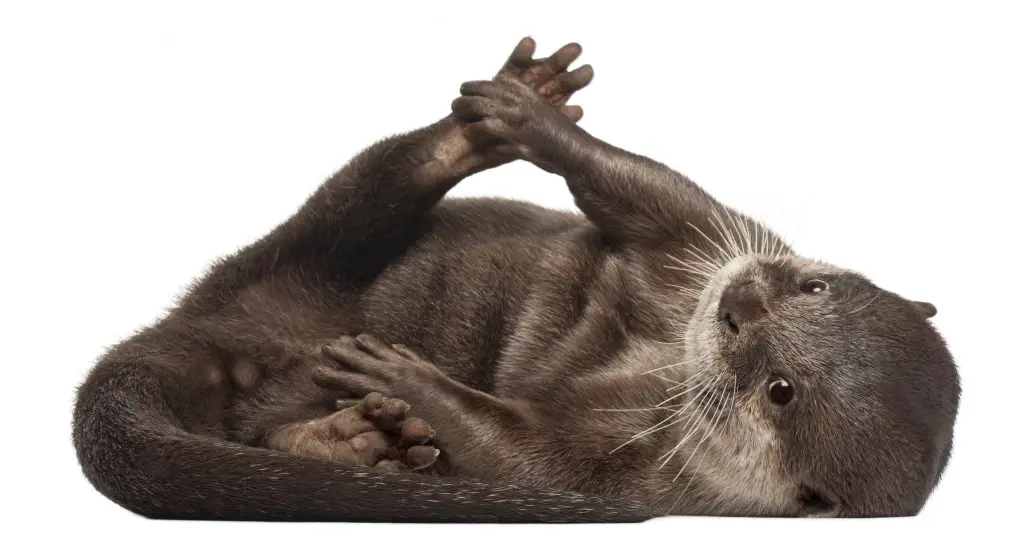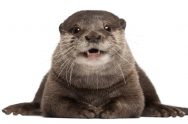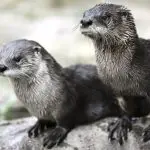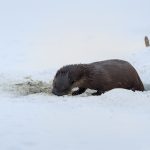Otters would seem to make the perfect pet – they are adorable, cute, and a reasonable size? However in most countries it is totally illegal to keep a pet otter.

In The U.S. Can Otters Be Pets?
On paper – any mammal that doesn’t need a Dangerous Wild Animal (DWA) license could be a possible pet to own. With the right size enclosure, diet, enrichment, and veterinary care – a pet is a pet is a pet.
However, if the animal in question is an otter – then almost certainly this isn’t going to happen.
All 13 otter species are vulnerable to challenges in the wild and some are so rare that they aren’t even really seen in their own natural habitat – so having one as a pet is incredibly unlikely. And pets are different again to ‘keeping otters’. Otters are highly social, very active, semi-aquatic, and need a lot of space – so having one single one as a pet would certainly be unethical – even if it were possible.
In the U.S. there is only one otter species that can be kept in the home so to speak – the Asian Short-clawed Otter – the smallest otter in the world. Other otters can be kept in captivity in zoos and other research facilities only – so if you want some otters – this might be your only chance.
A group of these otters would need an enclosure around the size of a very large apartment all to themselves ideally – and with a flowing water feature taking up a large part of it. They can climb fences up to 1.5 meters high without too much effort and can dig underground the same distance or more. They can destroy anything they decide to chew (like walls); make loud noises at any time of day, and often won’t like being handled (unless hand-reared).
So, although you can have otters as pets in the U.S. – you have been misled if you think it would be all fun!
Other countries will not even allow private owners to keep otters at all – even this one commonly-kept species – and even in a wonderful and seemingly perfect spacious enclosure. Many otters are deemed so protected – that even approaching the home of an otter could see you getting yourself a hefty fine.
Which Otters Make The Best Pets?
As mentioned above, in the U.S, the only otter you can have as a pet (in some states) is an Asian Short-clawed Otter (Aonyx cinereus). And they are classed as ‘vulnerable’ by the IUCN so importing them isn’t going to be a cheap process.
Around the size of a small cat (up to 3.5kg) – they are less than a meter long including the tail – and they have really thick fur. They are playful, inquisitive, and love interacting with all sorts of different enrichment stimuli – not really including humans though. Like cats again – bending to the will of humans isn’t their top priority – unless it is for more food!
And on to that food – these otters usually eat fish and crabs – so not ideal for indoor living. And their habit of spreading their spraints (poops) around with their back feet might not be great if you are handling them a lot and having them run around the home.
Do Pet Otters Build Dams in their Enclosures?
Otters are known for their remarkable abilities, but do otters construct dams in their enclosures? While otters are natural engineers in the wild, building intricate dams to create habitats, captive otters usually lack the opportunity to exhibit this behavior. In their enclosures, they are more likely to engage in other activities like swimming, playing, and socializing with their caretakers. Moreover, the absence of flowing water in captivity further diminishes their inclination to construct dams.
What’s The Best Enclosure For An Otter?
A large semi-aquatic enclosure would be best for your otters – assuming you have Asian Short-clawed Otters. All other otters are larger and/or have specific additional requirements – for example keeping Sea Otters (Enhydra lutris) or Giant River Otters (Pteronura brasiliensis) would require enclosures far beyond even the largest suburban yard – with these otters reaching easily over 1.7 meters in length.
Living in large groups, they would require a balance of land and fresh flowing water to fulfill their needs – ideally with several holts (den sites) underground where they could safely rest up. It would need to be large enough for them to have trees to climb, tunnels to run over and through as well as enough underwater space to dive and swim in a group – having chases – and allowing them to exhibit normal behaviors.
Keeping otters usually requires some sort of licensing and so the requirements for the enclosure may well be stipulated as part of this process – and handling could well be limited in certain areas. Therefore the whole ‘pet’ part of owning otters – with cuddles and drives around town – may well be only wishful thinking.







